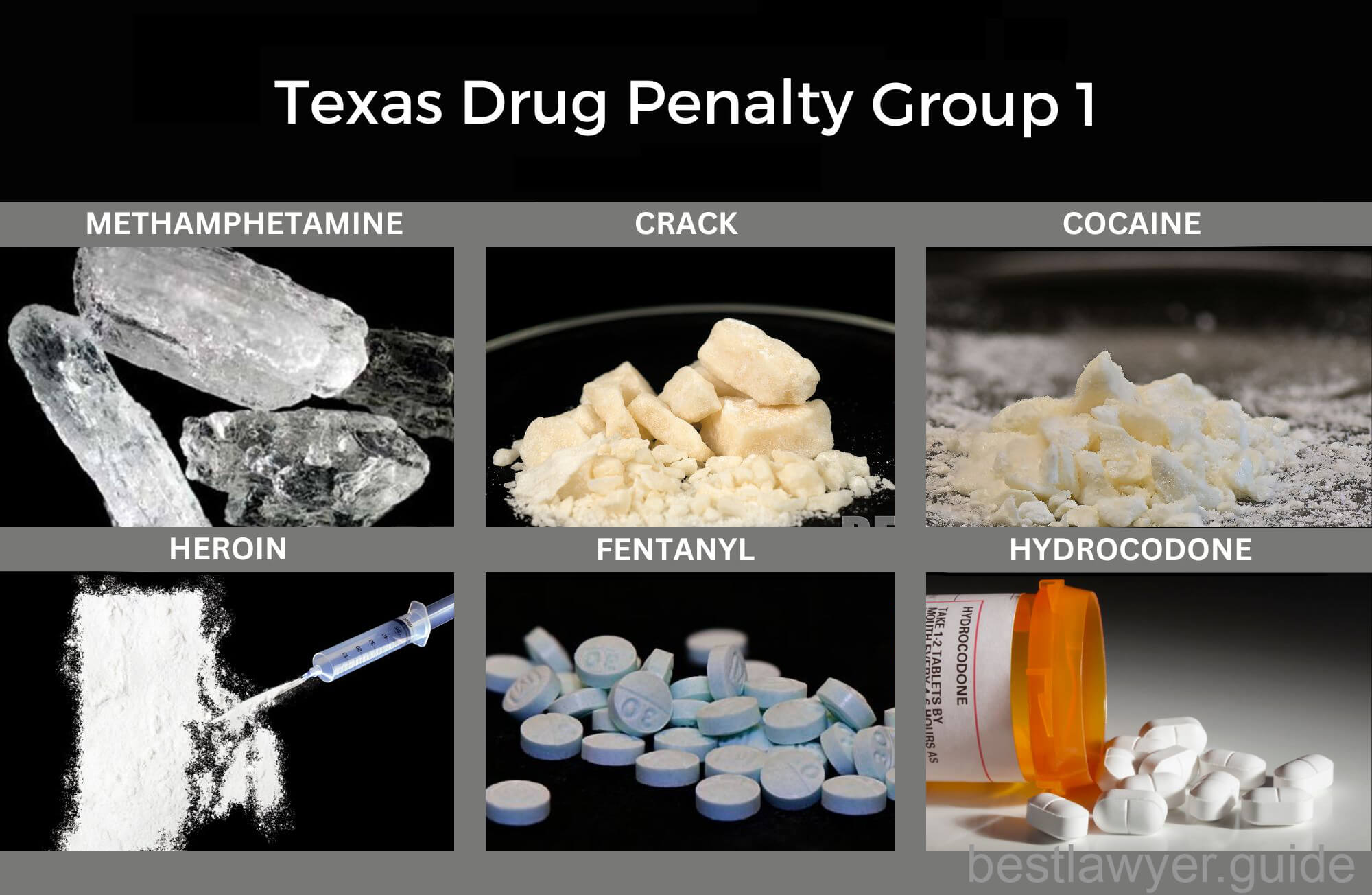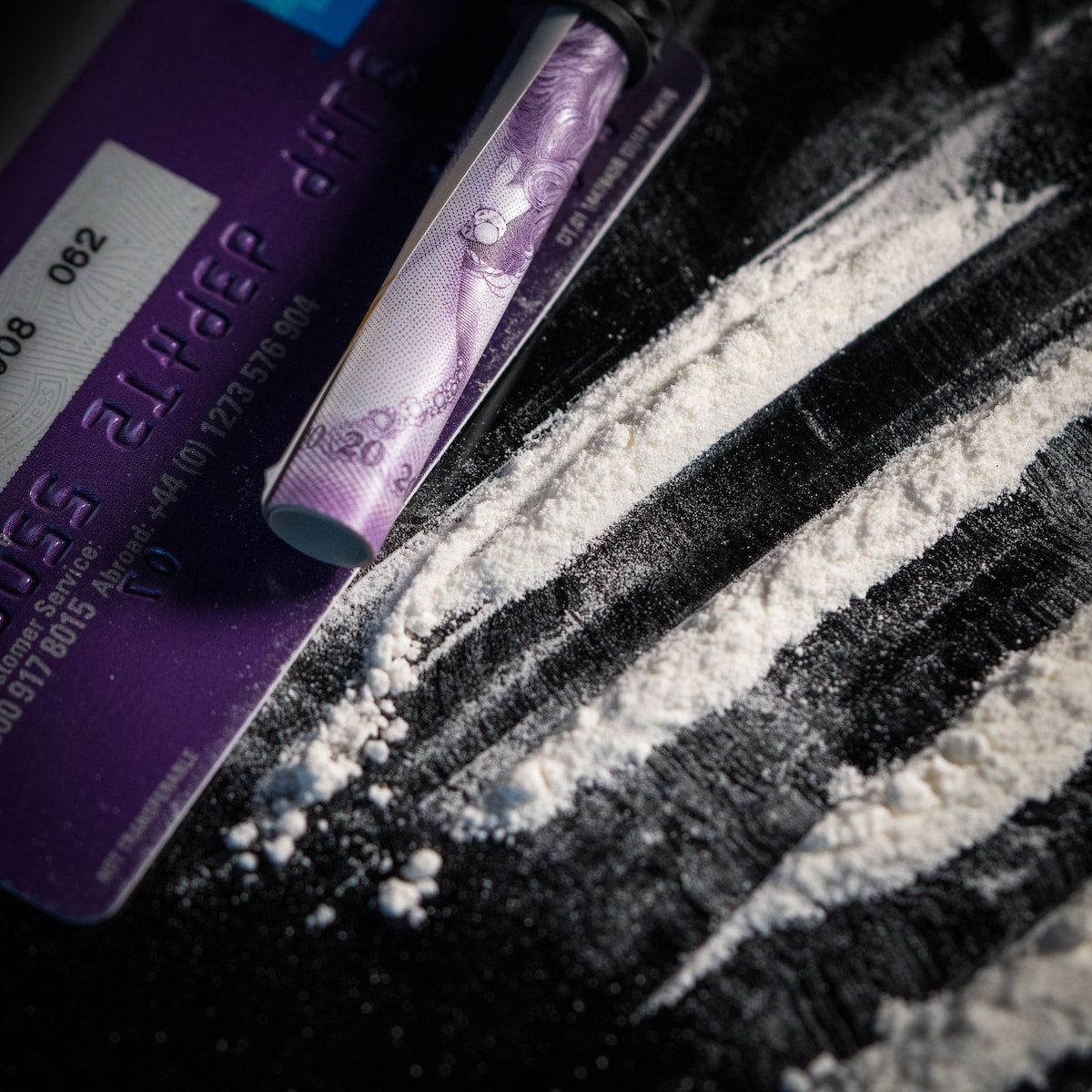Penalty Group 1 Drugs “Poss CS PG1”
Contents
This specific group consists of substances that are considered to have a high potential for abuse and pose significant risks to public health and safety.
Penalty Group 1 substances include a range of drugs, such as opiates, opioids, cocaine, methamphetamine, and hallucinogens like LSD and psilocybin mushrooms. These substances are classified as dangerous due to their potential for addiction, harmful effects on an individual’s physical and mental well-being, and their association with criminal activities.

In Texas, the penalties for possessing, manufacturing, distributing, or delivering substances within Penalty Group 1 are severe. The severity of the punishment depends on various factors, including the quantity of the substance involved, the intent of the individual, and their previous criminal record.
Understanding the specific substances and their classifications within Penalty Group 1 is vital for individuals, healthcare professionals, law enforcement agencies, and legal practitioners. It enables them to navigate the legal landscape effectively and ensure compliance with the state’s controlled substances laws.
In this comprehensive guide, we will delve deeper into the substances included in Penalty Group 1, their effects, and the legal implications associated with them. By gaining a thorough understanding of these controlled substances, you will be better equipped to make informed decisions, protect public safety, and contribute to the overall well-being of the community.
What are Controlled Substances?
Controlled substances refer to drugs and substances that are regulated by the government due to their potential for abuse and dependency. In Texas, these substances are classified into different penalty groups based on their potential harm and medical use.
The Texas Controlled Substances Act (chapter 481) categorizes drugs into different penalty groups based on their potential for abuse, medical use, and risk to public safety. Penalty Group 1 includes substances such as cocaine, heroin, methamphetamine, and certain hallucinogens, among others. Possessing, manufacturing, distributing, or trafficking these substances can lead to serious consequences, including hefty fines, imprisonment, and a permanent criminal record.

The penalties associated with the possession, distribution, or manufacture of controlled substances in Penalty Group 1 are particularly stringent in Texas. The state takes a proactive approach to addressing drug-related issues, imposing severe consequences to deter illegal activities and protect its citizens.
Categories of Controlled Substances
The Texas Controlled Substances Act classifies controlled substances into several penalty groups based on their potential for abuse and medical use.
Penalty Group 1 comprises the most dangerous and highly addictive substances, with severe legal consequences for possession, distribution, or manufacturing. These substances have limited or no accepted medical use and pose a significant risk to public health and safety.
Examples of substances included in Penalty Group 1 are:
- heroin (opium derivatives and opiates)
- cocaine
- mescaline (peyote)
- methamphetamine
- ketamine
- psilocybin
These drugs are known for their highly addictive nature and detrimental effects on individuals and communities. The penalties associated with these substances are among the most severe, reflecting the state’s commitment to combatting drug abuse and trafficking.
What is the Possession Penalty Group 1 in Texas?
Possessing Penalty Group 1 substances without a valid prescription or authorization can result in severe legal consequences. The penalties for possession vary depending on the quantity of the substance and the circumstances surrounding the offense.
Poss CS PG1 Penalties
Penalties for possession of Penalty Group 1 drugs depend on the amount and other circumstances. The following table provides an overview of the penalties:
| Abbreviation | Amount (by weight) | Offense | Classification | Penalty |
|---|---|---|---|---|
| POSS CS PG 1 <1G | Less than 1 gram | State Jail Felony | 180 days – 2 years | Up to $10,000 fine |
| POSS CS PG 1 >=1G<4G | 1 gram – 3.99 grams | Third-degree Felony | 2 – 20 years | Up to $10,000 fine |
| POSS CS PG 1 >=4G<200G | 4 grams – 199 grams | Second-degree Felony | 2 – 20 years | Up to $10,000 fine |
| POSS CS PG 1 >=200G<400G | 200 grams – 399 grams | First-degree Felony | 5 – 99 years or life | Up to $10,000 fine |
| POSS CS PG 1 >=400G | 400 grams or more | Enhanced First-degree Felony | 10 – 99 years or life | Up to $100,000 fine |
In Texas, possession of Penalty Group 1 substances is classified as a felony offense. The severity of the offense is determined by the weight of the substance involved. For example, possession of less than one gram of a Penalty Group 1 substance is considered a state jail felony, punishable by up to two years in jail and a fine of up to $10,000.
However, the penalties escalate significantly for larger quantities. Possession of between one and four grams is a third-degree felony, carrying a potential sentence of two to ten years in prison and a fine of up to $10,000. Possession of four to 200 grams is a second-degree felony, punishable by two to 20 years in prison and a fine of up to $10,000.
For possession of larger quantities, such as 200 grams or more, the offense becomes a first-degree felony, which carries a potential sentence of five to 99 years in prison and a fine of up to $10,000.

These penalties can be enhanced if the possession occurs in certain locations, such as near schools, parks, or other designated drug-free zones. Additionally, previous drug convictions can also result in increased penalties.
Penalty Group 1 Drugs
Opioids
Opioids are chemical compounds that produce morphine-like effects, such as pain relief and euphoria. Commonly prescribed opioids include codeine, hydrocodone, and oxycodone. In medical settings, these drugs can be beneficial when used properly, however, they carry a high risk of abuse and dependence due to their intense reward feelings. As a result, opioids are classified as Penalty Group 1 drugs.
Opiates/Opium Derivatives
Opium derivatives, such as heroin and others, are derived from the opium poppy plant and have powerful narcotic effects. These drugs can produce an intense sense of relaxation and euphoria, making them highly addictive. Long-term use can lead to physical dependence and significant health risks. As such, opium derivatives are classified as Penalty Group 1 drugs.
Cocaine
Cocaine is an extremely powerful stimulant made from cocoa leaves. It produces an intense feeling of pleasure and energy, however, it’s also highly addictive and potentially deadly in high doses. Cocaine is often snorted or injected, leading to further health complications. Due to its dangerous effects, cocaine is classified as a Penalty Group 1 drug.
Methamphetamine
Methamphetamine is a synthetically produced compound that acts similarly to amphetamines. This drug creates powerful feelings of pleasure and alertness in users, along with potentially dangerous side effects such as agitation and rapid heart rate. Methamphetamine has a high potential for abuse and long-term health consequences while being very difficult to kick once addiction has set in – all of which makes it a Penalty Group 1 drug.
Ketamine
Ketamine is a dissociative anesthetic that produces hallucinations and other psychological effects like confusion and memory loss. It is most commonly used in veterinary medicine but has become popular in some underground settings due to its unique effects. While there may be therapeutic benefits to ketamine in certain contexts, it carries a high risk of addiction and tolerance build-up if abused – making ketamine a Penalty Group 1 drug.
Mescaline (Peyote)
Mescaline is an alkaloid found in several cacti species, including the peyote cactus of North America. Mescaline has strong psychedelic effects, causing vivid visuals and an altered state of consciousness. Though it may have benefits in religious ceremonies where used traditionally, mescaline can be highly unpredictable and lead to adverse reactions when misused – resulting in its classification as a Penalty Group 1 drug.
Psilocybin and Similar Hallucinogens
Psilocybin hallucinogens are naturally occurring psychedelics found in mushrooms that can produce intense visions and altered states of perception. They may have therapeutic benefits for people struggling with mental distress, however, misuse can lead to unpredictable experiences with potentially severe risks such as panic attacks or psychotic episodes. For this reason, psilocybin and similar psychedelics are classified as Penalty Group 1 drugs.
Possession vs. Intent to Distribute
Controlled substances categorized under Penalty Group 1 include drugs like cocaine, heroin, methamphetamine, and certain prescription medications such as oxycodone and hydrocodone.
Possession refers to the act of having control or ownership over a controlled substance. If an individual is found in possession of a Penalty Group 1 substance, the severity of the offense will depend on the quantity of the substance involved. Possession of a small amount may be considered a misdemeanor while possessing larger quantities can result in more severe felony charges.
Intent to distribute, on the other hand, involves the intention to sell, deliver, or distribute controlled substances to others. This charge is based on evidence that suggests the individual had the intention to engage in drug trafficking or selling drugs. Factors that can be considered as evidence of intent to distribute include the presence of packaging materials, large amounts of cash, scales, or the possession of a significant quantity of the controlled substance.
Differentiating between possession and intent to distribute is essential because the penalties associated with these offenses vary significantly. Possession charges often carry less severe consequences, such as probation, fines, or shorter jail sentences. However, intent to distribute charges can result in lengthy prison sentences, substantial fines, and a permanent criminal record.
The burden of proof lies with the prosecution to establish intent to distribute beyond a reasonable doubt. Factors such as the quantity of the controlled substance, the presence of paraphernalia, witness testimony, and the individual’s prior criminal history can all play a role in determining intent.
Poss CS PG 1 Common Searches & Code Explanations
Poss CS PG 1B
Poss CS PG 1B refers to a charge related to the possession of a controlled substance in Penalty Group 1B. The classification of drugs into penalty groups may vary depending on the jurisdiction.
Poss CS PG 1/1B 1G DFZ IAT Poss CS PG 1/1B
Poss CS PG 1/1B 1G DFZ IAT Poss CS PG 1/1B is a more detailed description of the charge, possibly specifying the quantity (1 gram), and using abbreviations such as “DFZ” for “Drug-Free Zone” and “IAT” for “In A School Zone,” indicating specific circumstances that may enhance the severity of the charge.
Poss CS PG 1 1G
Poss CS PG 1 1G is another charge related to the possession of a controlled substance in Penalty Group 1, with the quantity specified as 1 gram.
Poss CS PG 1 1G DFZ Poss CS PG 1 1G
Similar to the second phrase, Poss CS PG 1 1G DFZ Poss CS PG 1 1G describes possession of a controlled substance in Penalty Group 1 with the quantity specified as 1 gram, in a Drug-Free Zone.
Poss CS PG 1
Poss CS PG 1 refers to a charge related to the possession of a controlled substance in Penalty Group 1, without specifying the quantity or other circumstances.
Poss CS PG 1 =1G 4G
Poss CS PG 1 =1G 4G indicates a charge related to the possession of a controlled substance in Penalty Group 1 with a quantity range of 1 gram to 4 grams.
Poss CS PG 1 =4G 200G
Similarly, Poss CS PG 1 =4G 200G indicates a charge related to the possession of a controlled substance in Penalty Group 1 with a quantity range of 4 grams to 200 grams.
Conclusion
We hope this post has provided you with a comprehensive understanding of Penalty Group 1 in Texas and the impact of controlled substances. It’s crucial to be knowledgeable about these substances and the legal consequences associated with them. By exploring the different categories and penalties, you can make informed decisions and take necessary precautions to ensure compliance with the law. Remember, staying informed is key to avoiding any complications and protecting yourself and your community. Stay safe and informed!




